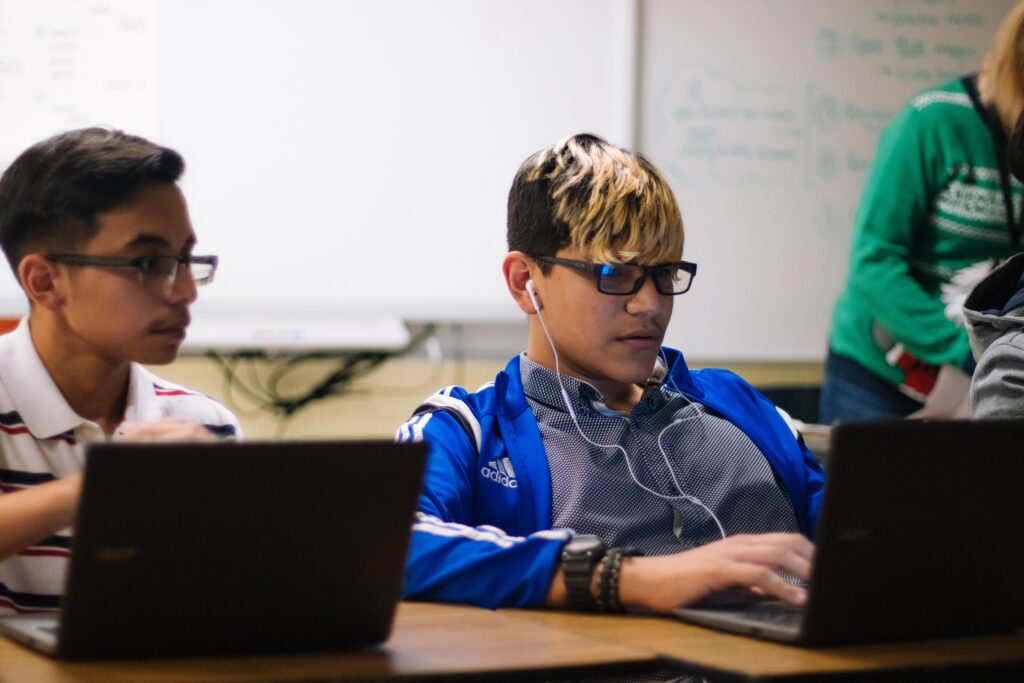Last week, we took a look at some of TCEA’s legislative priorities for the 2021 session of the Texas Legislature. This week, we explore digital learning topics and policies.
Legislative Priorities for Digital Learning
Technology Planning

Technology is ubiquitous in our society. Almost every aspect of our day is powered by technology. This is true for a school district as well. This has required many districts to quickly adapt as they strive to find personnel that have the level of technical expertise that is required to support sophisticated networks, teachers who can leverage technology to support student learning, and staff with the skills to analyze data that was once only needed in the corporate world. The network and equipment these staff members need must also be purchased and maintained in a safe and secure environment. All of this must be accomplished with limited funds. But none of this is possible without careful planning. Currently, Texas school districts are not required to create, follow, or update a technology plan.
Teacher Readiness
In a recent report written by Common Sense Media, it was noted that 56% of teachers felt that lack of training is a “significant or extremely significant problem.” The quick pivot to remote learning was taxing on many teachers. They were unprepared to adapt to the demands of knowing how to use the conferencing platforms, but also how to integrate the technology tools within their pedagogy and their content. In 2011, when districts lost the Technology Allotment, many schools disbanded their instructional technology training teams. These districts had used their Technology Allotment funding to pay for personnel to train their teachers. When that resource was eliminated, so were those positions. We are still reaping some of the consequences of the loss of that dedicated technology funding.

Digital Literacy
There is a mistaken assumption that since most children and teenagers have a smartphone, they must be digitally literate. Knowing how to use a consumer product and how to utilize digital technology for work and learning are two separate skill sets. The digital literacy skills that students need today are complex and require not only access to a variety of technologies, but also instruction and guidance in how to leverage digital resources in order to research, create, analyze, curate, and collaborate as they are acquiring new knowledge and skills. At the same time, they need to be taught how to protect themselves and their data since much of their life will be lived online.
Technical Support

School districts often have the largest and most sophisticated networks within a community. These networks must support the growing technical demands of the school district while protecting the student and staff personal information from cybersecurity attacks. These networks and the digital devices that access the networks require technical staff that can keep up with the demands of a large scale deployment of devices. They are often understaffed and underpaid, but they are committed to the core mission of the school district. These dedicated personnel are managing complicated networks and face many security challenges. Keeping them trained and staffed at a level that is manageable is a challenge. It requires funding for technical equipment, salaries, and training to provide the level of support required to ensure the technology is always available and is safe to use.
Recommendations to address the various components of digital learning:
In the 85th Legislature, SB 810 required the SBOE to update the Long Range Plan for Technology at least every five years. The SBOE updated the plan and added it to the appendix of the Long Range Plan for Education in 2018. The Texas Education Agency brought together a group of stakeholders together to reimagine what is possible if we utilize technology within our educational environment. TEA then took this group’s ideas and built a plan that, if enacted, would address the barriers identified by TCEA.

The plan has already been developed and approved. To address the barriers of digital learning, the state now needs to implement the plan. Below is a list of actions we believe the Texas Education Agency and the ESC’s should do to assist districts in implementing the Long Range Plan for Technology (LRPT).
- The Texas legislature should provide appropriate funding to accomplish the goals and strategies in the LRPT. These funds would support the following activities:
- Create a task force made up of district and state stakeholders to establish benchmarks that districts can use to measure their progress in implementing the LRPT.
- Require districts to write and adopt a three-year technology plan that demonstrates how they will align their district’s goals with the LRPT.
- Establish a Digital Teaching and Learning grant that districts can use to implement their technology plans once they are approved by the state. These grants should be available for all districts that submit an approved plan.
- TEA, ESC’s, and educational technology nonprofits should provide districts with support as they implement their plans. This could be in the form of, but not limited to:
- Technical support and advice
- Professional development for both administrators and teachers
- Workshops on best practices for implementing digital instructional materials
- Technology planning advice
- Exemplar districts who exhibit best practices are identified so that other districts could contact and visit them.
- The Texas legislature should also:
- Replace the outdated time-based system (Carnegie unit) of awarding credits and funding with one that is based on a student’s competency.
- Allow school districts to create their own full-time or part-time TxVSN school, if only within their own district boundaries.
In Conclusion
After reviewing our legislative priorities, you can see why we see 140 days as the biggest barrier to making these priorities a reality. Our enemy is the clock, not our policies. Throw in a pandemic that has negatively affected the state budget and will decrease our access to legislators and their staff members and you can see why it is imperative that we focus on a few of our major priorities. Broadband has been a priority of TCEA’s for more than eight years, but the COVID-19 pandemic has increased the chances that it will also be a priority of the Texas legislature. We are hopeful that some meaningful legislation will be passed on broadband policy.
We will look for ways to move all of our legislative priorities forward, but the clock, the budget, and access will make this a difficult session. If you are interested in following our progress and you are a member of TCEA, be sure and join the Advocacy group in the TCEA Community. If you are not a member, consider joining and/or come back to the blog for updates and check out my Twitter feed @jbergland. And finally, if you want to get more involved in TCEA’s advocacy efforts, email me at jbergland@tcea.org.

